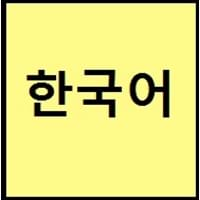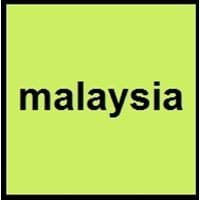Countries
China, Jilin Province, North Korea, South Korea, Yanbian
Brunei, Malaysia, Singapore
National Language
North Korea, South Korea
Malaysia
Second Language
Not spoken in any of the countries
Indonesia
Speaking Continents
Asia
Asia
Minority Language
Japan, People's Republic of China, Russia, United States of America
Thailand
Regulated By
The National Institute of the Korean Language
Dewan Bahasa dan Pustaka
Interesting Facts
- Korean has borrowed words from English and Chinese.
- Korean has two counting systems. First, is based on Chinese characters and numbers are similar to Chinese numbers, and second counting system is from words unique to Korea.
- One of the most politically powerful language historically is Malaysian Language.
- Malaysian earliest known inscriptions were found in South of Sumatra way back in 683-6 AD.
Similar To
Chinese and Japanese languages
Indonesian Language
Derived From
Not Available
Tamil Language
Alphabets in
Korean-Alphabets.jpg#200
Malaysian-Alphabets.jpg#200
Writing Direction
Left-To-Right, Horizontal, Top-To-Bottom
Not Available
Hello
안녕하세요. (annyeonghaseyo.)
Hai
Thank You
감사합니다 (gamsahabnida)
terima kasih
How Are You?
어떻게 지내세요? (eotteohge jinaeseyo?)
Apa khabar?
Good Night
안녕히 주무세요 (annyeonghi jumuseyo)
Selamat Malam
Good Evening
안녕하세요 (annyeonghaseyo.)
Selamat Petang
Good Afternoon
안녕하십니까 (annyeong hashimnikka)
Selamat tengah hari
Good Morning
안녕히 주무셨어요 (An-yŏng-hi ju-mu-shŏ-ssŏ-yo)
Selamat pagi
Please
하십시오 (hasibsio)
sila
Sorry
죄송합니다 (joesonghabnida)
maaf
Bye
안녕 (annyeong)
Selamat tinggal
I Love You
당신을 사랑합니다 (dangsin-eul salanghabnida)
Saya sayang kamu
Excuse Me
실례합니다 (sillyehabnida)
Maafkan saya
Where They Speak
South Korea
Bengkulu Province, Sumatra
Dialect 2
Gyeongsang
Pekal
Where They Speak
South Korea
Indonesia
Where They Speak
China, North Korea
Indonesia
How Many People Speak
Not Available
Second Language Speakers
Not Available
Native Name
한국어 (조선말)
Bahasa melayu
Alternative Names
Hanguk Mal, Hanguk Uh
Not Available
French Name
coréen
malais
German Name
Koreanisch
Malaiisch
Pronunciation
Not Available
[baˈhasə malajˈsiə]
Ethnicity
Koreans
Not Available
Origin
Before 1st century
c. 683 AD
Language Family
Koreanic Family
Austronesian Family
Subgroup
Not Available
Not Available
Branch
Not Available
Not Available
Early Forms
Old Korean, Middle Korean and Korean
Ancient Malay, Old Malay, Pre-Modern MalayClassical Malay,
Standard Forms
Pluricentric Standard Korean, South Korean standard and North Korean standard
Pluricentric Standard Malay
Signed Forms
Korean Sign Language
Malaysian Sign Language
Scope
Individual
Individual
ISO 639 6
Not Available
Not Available
Glottocode
kore1280
stan1306
Linguasphere
45-AAA
No data available
Language Type
Living
Living
Language Linguistic Typology
Subject-Object-Verb
Not Available
Language Morphological Typology
Agglutinative
Agglutinative
All Korean and Malaysian Dialects
Most languages have dialects where each dialect differ from other dialect with respect to grammar and vocabulary. Here you will get to know all Korean and Malaysian dialects. Various dialects of Korean and Malaysian language differ in their pronunciations and words. Dialects of Korean are spoken in different Korean Speaking Countries whereas Malaysian Dialects are spoken in different Malaysian speaking countries. Also the number of people speaking Korean vs Malaysian Dialects varies from few thousands to many millions. Some of the Korean dialects include: Jeju, Gyeongsang. Malaysian dialects include: Bengkulu , Pekal. Also learn about dialects in South American Languages and North American Languages.
Korean and Malaysian Speaking population
Korean and Malaysian speaking population is one of the factors based on which Korean and Malaysian languages can be compared. The total count of Korean and Malaysian Speaking population in percentage is also given. The percentage of people speaking Korean language is 1.14 % whereas the percentage of people speaking Malaysian language is 1.16 %. When we compare the speaking population of any two languages we get to know which of two languages is more popular. Find more details about how many people speak Korean and Malaysian on Korean vs Malaysian where you will get native speakers, speaking population in percentage and native names.
Korean and Malaysian Language Codes
Korean and Malaysian language codes are used in those applications where using language names are tedious. Korean and Malaysian Language Codes include all the international language codes, glottocodes and linguasphere.





